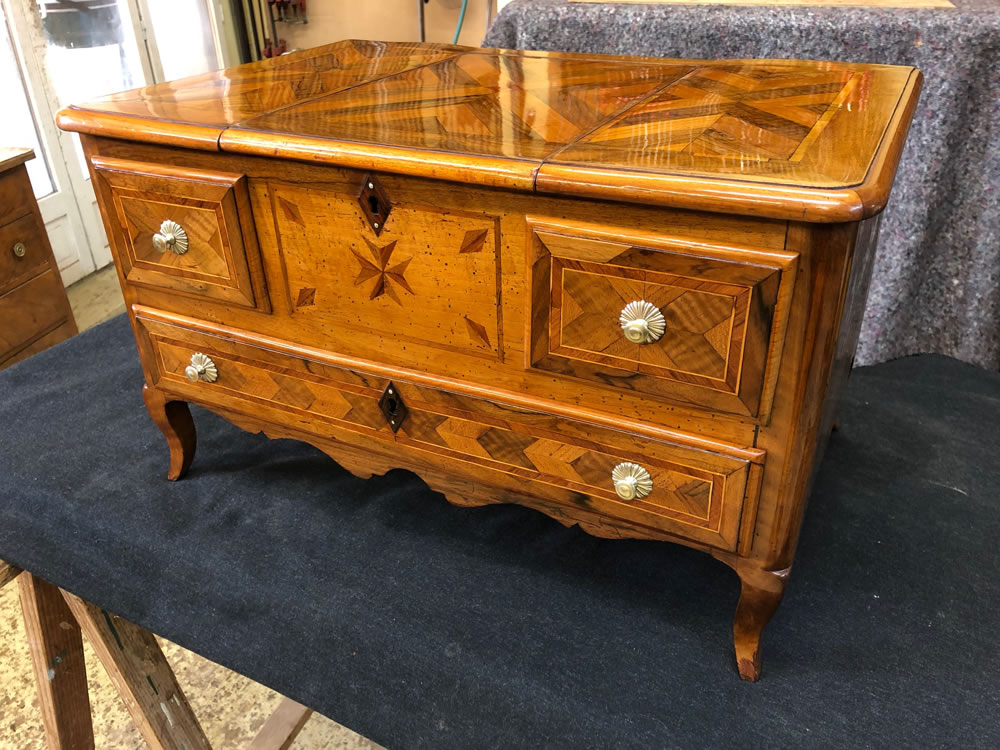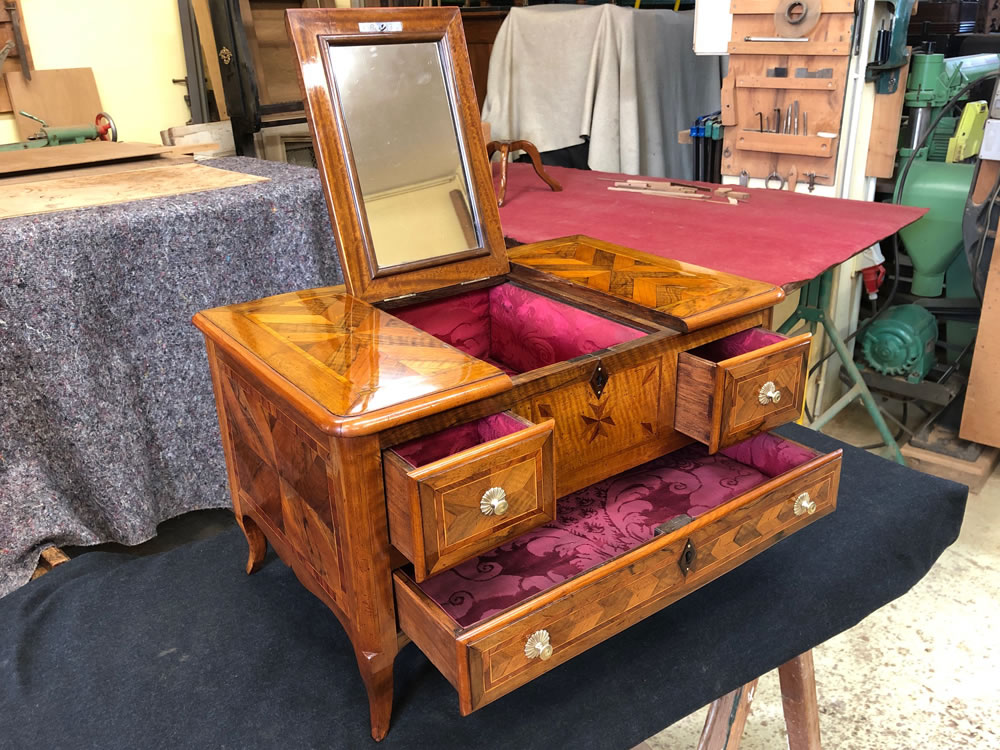When we look into the origins of furniture created as small-scale models, we learn that they go back to to the high middle ages and the time of the guilds.
It was the opportunity for a cabinet-maker to prove his abilities and know-how in small-scale models and consequently become a master in the domain and gain recognition of his talent. What we also call the masterpieces were part of the tradition of apprenticeship for a young guild member, an accomplishment at the end of his learning period.
It should be noted that these “models” could just as well have been created by the great cabinet-makers, such as Linke in the 19th century, to have a precise vision before making the same full-scale piece of furniture. These models by Linke, for example, were often made of terracotta, most likely to save time and materials.
Whatever the case and on the whole, the making of a miniature object or piece of furniture sometimes required quite a bit of talent and virtuosity.
This is the case with this small-scale model of a dressing table in a light walnut with frames made up of slanted fillets of boxwood and violet wood.
Notice the Maltese cross in violet wood on the façade. It’s an emblem of the eastern Christians and perhaps a nod to the apprenticeship.
The interior is padded with a flowery silk as was often the case with these types of small furniture.
Restoration, or rather preservation, was necessary to remedy the slight, but almost inevitable bulging of the veneer, and a sponge-applied varnish for the finish best suited the preciousness of these wonderful objects.



